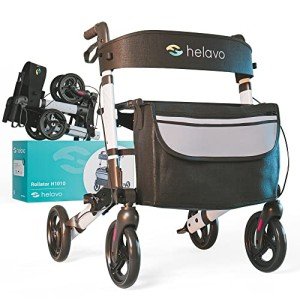Exploring the Innovations of Stable Walker Technology
In the ever-evolving world of robotics and automation, the concept of a "stable walker" has become a fascinating intersection of design, technology, and biomechanics. A stable walker refers to a robotic system efficient in maintaining balance and passing through numerous surfaces, mimicing human-like motion. This article provides an in-depth expedition of stable walkers, their parts, applications, and the technological developments that continue to push the boundaries of what these devices can accomplish.
What Makes a Walker "Stable"?
At its core, stability in a robotic walker is defined by its ability to stay upright and browse a series of surfaces without falling. Numerous aspects contribute to a walker's stability:
- Center of Gravity: A lower center of gravity usually improves stability. Designers frequently put parts tactically to optimize this element.
- Sensors: Advanced sensing units assist the walker detect modifications in the environment, enabling real-time modifications to preserve balance.
- Actuators: These elements allow movement and play an important function in consistent navigation.
- Algorithms: Sophisticated algorithms process sensor data and figure out the very best movements, allowing adaptive walking.
Table 1: Key Components of Stable Walkers
| Component | Function |
|---|---|
| Sensing units | Find environmental conditions and assist in balance |
| Actuators | Propel motion in various directions |
| Control Systems | Incorporate sensing unit input to make real-time balance changes |
| Power Supply | Supply required energy for functions and movement |
Applications of Stable Walkers
The applications of stable walkers are vast and varied, spanning several fields. Below are some key areas where these technologies are making an effect:
Healthcare:
- Rehabilitation: Stable walkers can assist clients recovering from injuries or strokes by supplying support while they restore their mobility.
- Exoskeletons: Wearable robotic gadgets can aid individuals with mobility impairments, allowing them to walk again.
Search and Rescue Operations:
- Unmanned stable walkers can browse difficult terrains during search operations after natural disasters. They are indispensable in reaching areas that are unattainable to human beings or wheeled automobiles.
Elderly Assistance:
- Robotic walkers created for the elderly can help keep self-reliance by providing support for movement and navigation around the home.
Industrial Applications:
- In settings where heavy loads need to be carried, stable walkers can help employees by bring items without the danger of losing balance.
Table 2: Applications of Stable Walkers
| Application Area | Use Case Description |
|---|---|
| Health care | Rehab support and exoskeletons for mobility |
| Browse & & Rescue | Navigating disaster-struck locations for recovery operations |
| Elderly Assistance | Supporting mobility for elderly people |
| Industrial | Bring heavy loads in intricate environments |
Technological Advancements
Robotic walkers have actually advanced significantly over the past couple of years due to improvements in numerous critical areas:
- Sensor Technology: Enhanced sensors such as LiDAR, ultrasonic, and cams offer detailed ecological mapping, permitting walkers to make more informed choices on the relocation.
- Artificial Intelligence (AI): AI and device learning algorithms facilitate better forecast designs for motion, allowing robotic walkers to discover from their experiences and improve with time.
- Battery Life: The advancement of lighter, more efficient battery innovations guarantees that stable walkers can operate longer with less regular recharging.
- Materials Science: Innovations in products, such as lightweight composites, enhance the resilience and performance of robotic walkers.
Obstacles Facing Stable Walkers
Despite the amazing advances in stable walker technology, numerous obstacles remain. Some of these consist of:
- Complex Environments: Navigating unforeseeable terrains is still a significant difficulty for many walkers.
- Cost and Accessibility: Many advanced robotic walkers are expensive, restricting their availability to a broader audience.
- User Adaptation: Training users to effectively run or adapt to robotic walkers is essential, especially in healthcare applications.
Often Asked Questions (FAQ)
1. Can stable walkers be used outdoors?Yes, lots of stable walkers are developed to operate in numerous outdoor conditions, with features to pass through uneven surface.
2. How do stable walkers vary from standard wheelchairs?Stable walkers supply active support, enabling for mobility and motion comparable to walking, whereas wheelchairs provide seated assistance without making it possible for walking motion.
3. Are stable walkers safe for older grownups?Yes, they can significantly enhance the safety of older grownups by offering stability and minimizing the risk of falls. However, users must be trained on their proper use.
4. What is the future of stable walker technology?The future points towards more autonomous systems using advanced AI, allowing walkers to make choices in real-time and adjust to user choices and environments.
The exploration of stable walker technology discovers an exceptional realm full of capacity. These advanced makers blend engineering, synthetic intelligence, and human-centered design to attend to critical challenges in mobility and accessibility. With All-Terrain Walker set to additional improve their abilities, stable walkers represent an essential development with the promise to change how individuals move and engage with their environments. Whether in healthcare facilities, disaster zones, or homes, the impact of stable walkers continues to grow, improving lives and supplying support in manner ins which were once believed difficult.
As innovations evolve and the integration of AI and efficient materials continues, the future of stable walkers appears not just promising however essential beforehand human mobility and independence.

